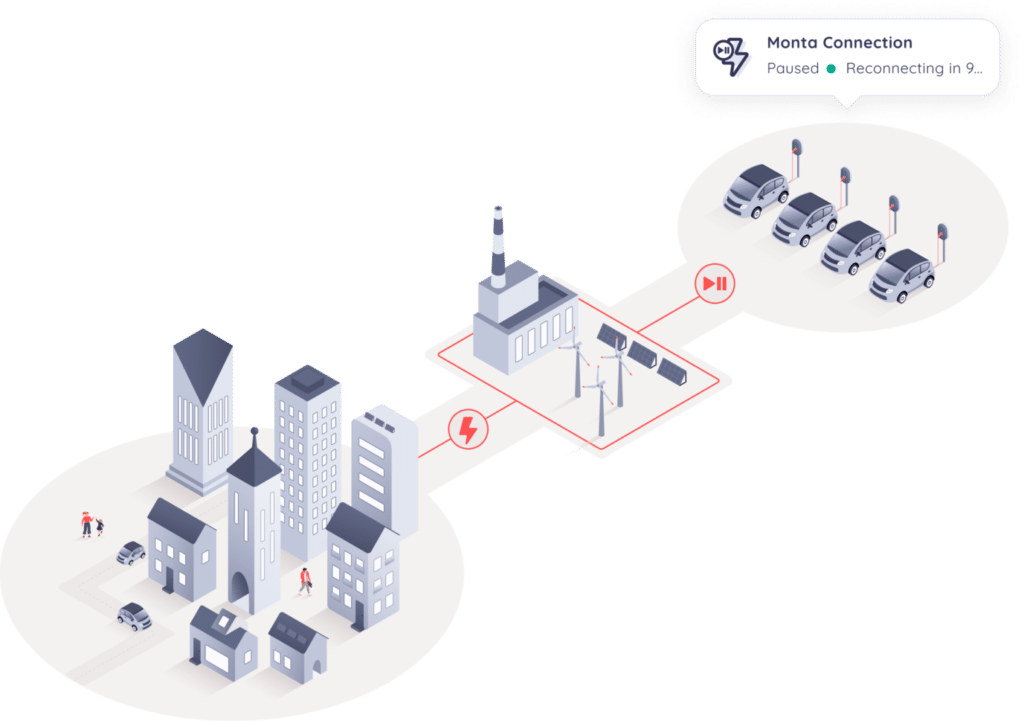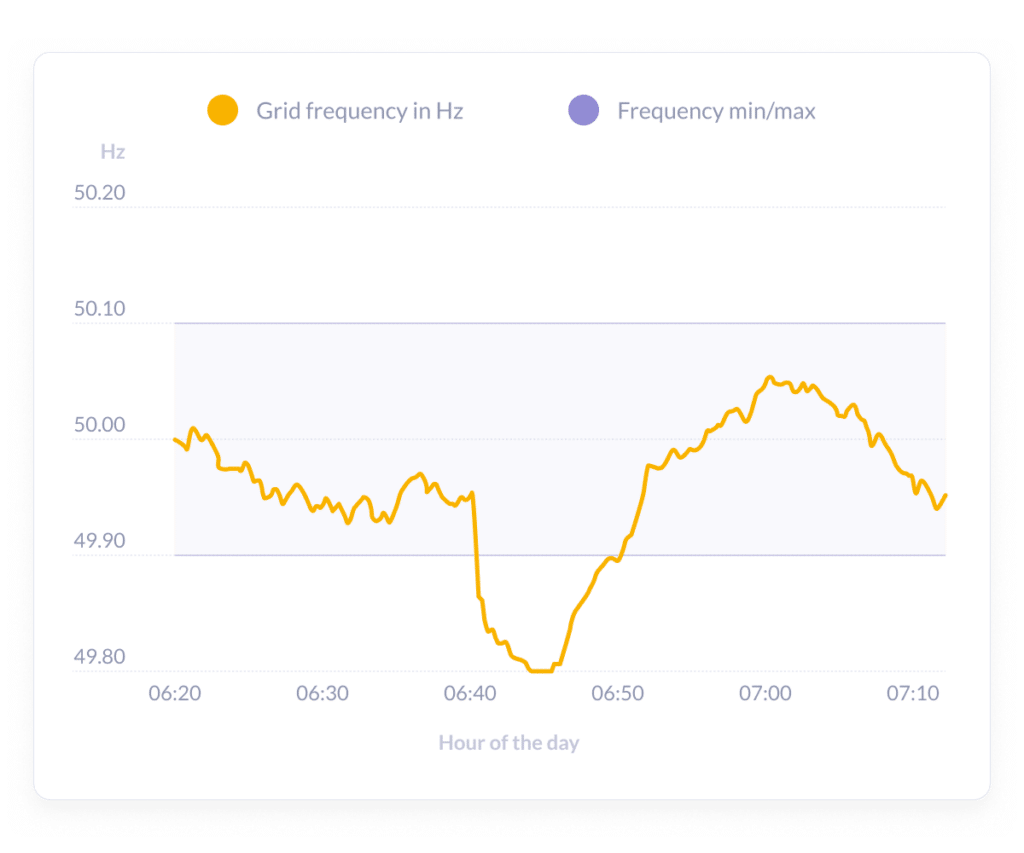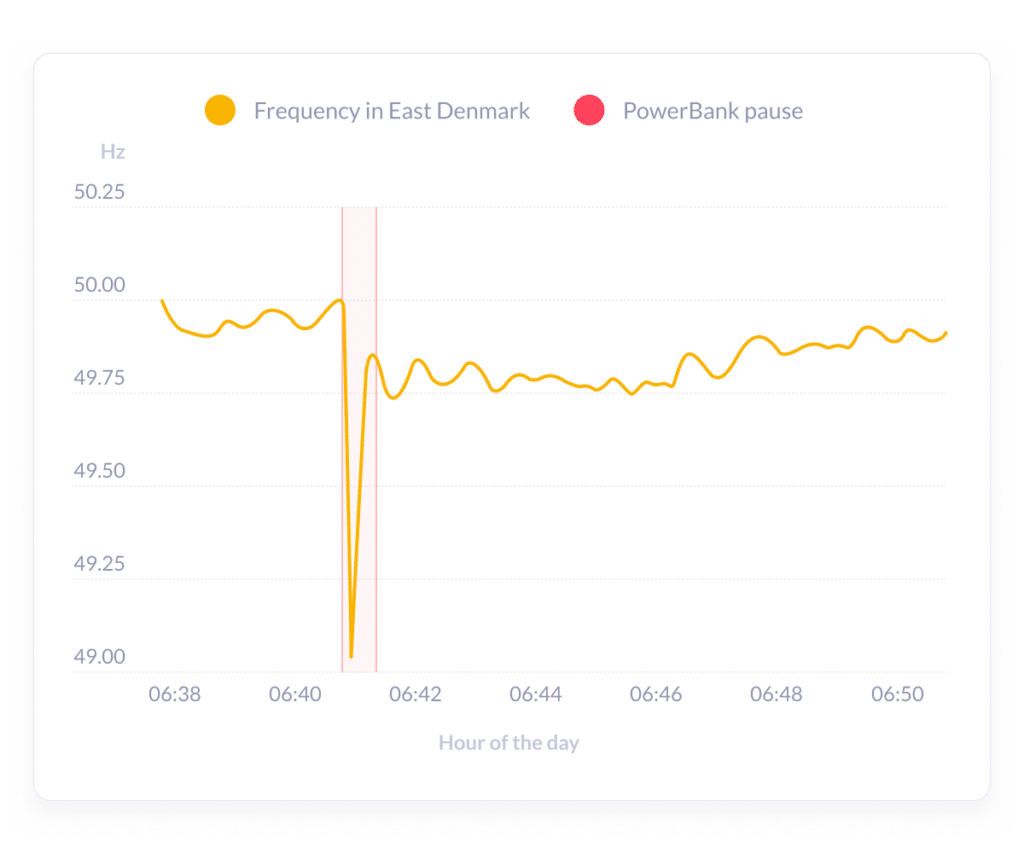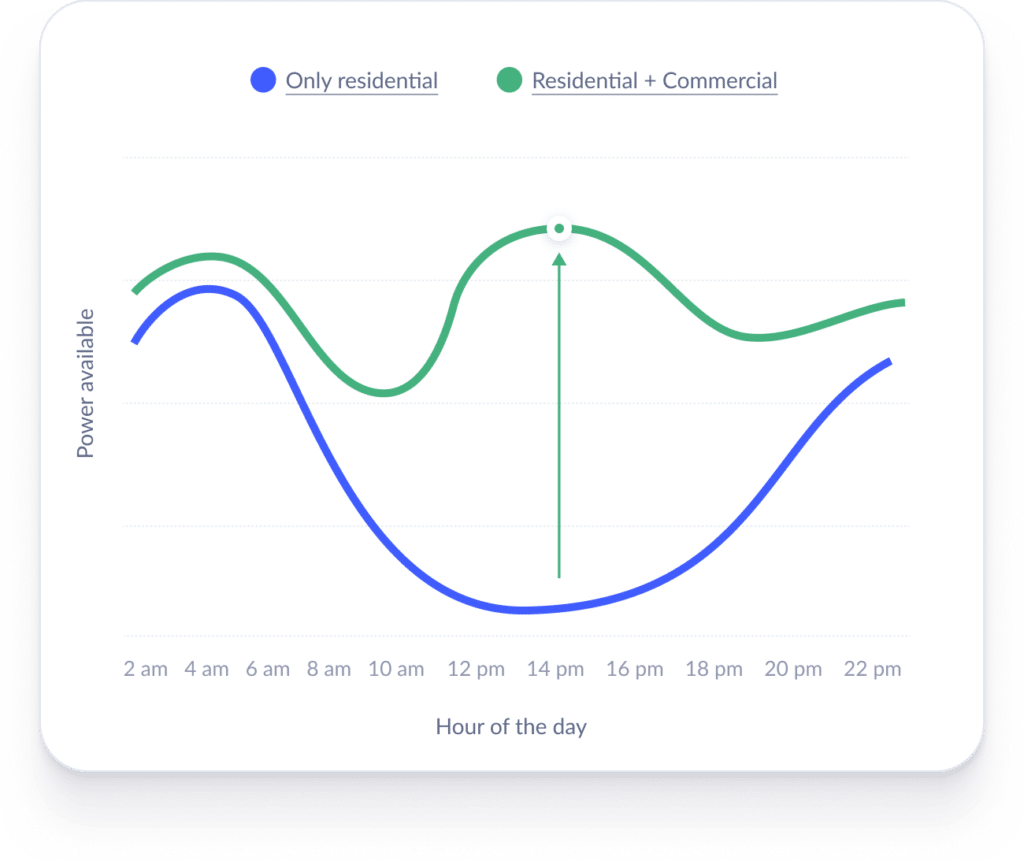
It's been six months since we launched the Monta PowerBank Beta Program and we couldn't be more thrilled with the progress we've made. Every day, we got closer to our goal of future-proofing the EV ecosystem and making it more sustainable, with the results of our beta program in Denmark and Sweden speaking for themselves.
Over the past 6 months, we’ve developed and validated a pioneering technology that transforms charging points into valuable resources, contributing towards grid stability. Our Beta program witnessed enthusiastic participation across Denmark and Sweden, enabling us to verify their charge point compatibility in various locations.
We are thrilled to share the final outcomes through this blog post and proudly announce that we're ready to shift from Beta and bring our innovative solution to life in East Denmark and Sweden with plans to launch in the UK!
Grid contribution: The why and how?
Grid contribution becomes pivotal when an imbalance is noticed, signalling an unforeseen dip in power generation (e.g., when a power plant ceases operation) or a surge in electricity demand (like when numerous devices are being charged simultaneously). Overburdening the grid can lead to blackouts and a myriad of issues that can disrupt our daily routines.
At Monta, we're committed to making home-based EV charging more sustainable for the grid. As participants of the FCR-D (Frequency Containment Reserve - Disturbance) services, we introduced PowerBank - a Monta app feature that links various home charge points to the electrical grid system. PowerBank ingeniously pauses and restarts charging activities, detecting and adjusting to grid imbalances.

Six months ago we rolled out the PowerBank Beta program in Denmark and Sweden, inviting thousands of participants to be part of the solution, contributing towards a sustainable and resilient grid and earning Monta Wallet credits on top of that.
But the question is, how successful was it?
Unveiling the results
Our Beta program yielded some impressive figures:
- 3600 residential charge points were engaged across Denmark and Sweden (mainly private home users)
- We managed to aggregate an average of 3 MW of electricity demand at nighttime (equivalent to the energy consumption of 2,250 households)
- During some nights, we were able to aggregate 8, and up to 10, MW of power with which we could help stabilise the grid (equivalent to electricity for about 6,000 households).
So, why does this matter? Well, preventing blackouts and stabilising the grid are crucial for our daily lives. We rely on electricity for everything from charging our phones to running our businesses. Without it, we'd be lost. By participating in this program, we're not only helping to ensure that we have a stable supply of electricity, but we're also contributing to a more sustainable future. It's a win-win situation for everyone involved.
Visualising grid balance with PowerBank
The following graph shows the fluctuation of the Scandinavian grid's frequency during the morning of April 26th. The frequency is a direct representation of how balanced the grid is and all equipment connected to it is designed to work at 50 Hz.

The graph showcases the impact of a sudden unexpected shutdown in a Swedish nuclear power plant on the national grid's frequency. Normally at a balanced state of 50 Hz, any frequency deviations signal an imbalance. Any time there is a drop to 49.9 Hz or below because of a shutdown, a three-tiered response system kicks into action. Monta helps in what is called the primary reserve, which has a fast reaction time within the first 5-30 seconds. By pausing all ongoing charges, the electricity demand is also suddenly reduced matching the pattern set by the imbalance, stabilising the grid. Other kind of assets with slower response times ensure the grid's stability after the 30 seconds, and all charge points can go back to functioning normally.

This second graph illustrates the frequency behaviour in East Denmark, which is interconnected with Sweden. It captured a sudden drop in frequency, demonstrating the potential for large-scale blackouts if the frequency isn't rapidly balanced (e.g., through technologies like PowerBank) and brought back to 50 Hz, all generators connected to the grid would disconnect due to overheating, which can lead to a sudden loss of power, leading to a domino effect that can result in a complete blackout. Here is where PowerBank plays a crucial role in grid balancing, highlighting its importance in the flexibility markets. It also emphasises the need for preparedness in addressing grid imbalances and the associated revenue opportunities from the Transmission System Operator (TSO).
A better future starts here
The signups included charge points located in five different bidding areas, which span Denmark and Sweden. Each one has its own independent electricity market in which we could participate. This means that now after validating our PowerBank technology, we can help stabilise the grid in five different markets, making a significant impact on the overall sustainability of the energy ecosystem.
As part of the Monta PowerBank Beta program, each charge point that signed up has been receiving 0.15 DKK/kWh, up to a maximum of 50 DKK per month in credits. We're grateful for the support of our beta testers and we are happy to report that almost all of our users have reached the 50 DKK credit limit, which is not surprising considering it takes only 333 kWh per month of charging to reach this limit - less than the average energy charged per user in a month. This is a testament to the program's success and the willingness of our users to be part of the solution to their country's energy problems.
From testing to learning
We've learned a lot from testing the Monta PowerBank Beta program. Participating in grid services and flexibility markets requires delivering precise data on live consumption at each charge point. While this has resulted in a considerable increase in data transfer between Monta and the charge points, we are able to handle the volume of messages and are working closely with different hardware manufacturers to improve the way we communicate updates with their charge points.
The testing of stopping ongoing charges has been carried out in Monta's lab and nearby charging sites, to make sure we can guarantee the response times required by flexibility markets and check each charge point's compatibility with this feature.
A simple way to contribute to a greener future
The Monta PowerBank program is the first step towards a more sustainable and developed grid. By briefly pausing and restarting your charge when the grid is going through an unstable moment, you're helping your community and earning Monta Wallet credits on top of that. It's a small price to pay compared to the rewards that come from it. With increasing volatility and unpredictability in electricity generation and consumption, there is an increased possibility of blackouts or outages that can affect the lives of many.
The future of Monta’s PowerBank
With the successful completion of our extensive Beta testing and validation phase, we're pleased to announce that Monta's PowerBank technology has achieved sufficient maturity to start participating in ancillary services. Beginning in East Denmark (Zealand) and Sweden, our technology will start making meaningful contributions to the grid.
We want to extend our heartfelt thanks to everyone who has been a part of this journey, working towards a sustainable future that guarantees reliable power supply for generations.
A message to PowerBank Beta program participants in Denmark and Sweden
As we transition out of our Beta phase, there are several crucial updates we would like to share with our participants.
Compatibility of charging point models with PowerBank
Starting from July 1st, only participants with charge points compatible with our PowerBank solution will continue to receive credits for enrollment in PowerBank. You can verify your charge point's compatibility with PowerBank here.
What determines this compatibility? The speed at which your charge point can relay information back to our system, enabling us to depend on that charge point for grid balancing at the necessary times.
We are actively collaborating with charge point manufacturers to expand our integration with a broader range of models and brands, enabling more people to become part of the PowerBank community.
Amendments to terms and conditions
We're making a minor modification to our terms and conditions as we transition from PowerBank BETA to PowerBank: the guaranteed minimum payment will be adjusted from 0.15 DKK per charged kWh to 0.05 DKK while maintaining the cap at 50 DKK monthly. The price for being part of grid services varies month to month, so although we won’t be able to guarantee the former price, we will do our best to maintain it that way!
The future - business chargers
Looking forward, we will be incorporating business charge points into the program. This will enhance the available power supply throughout the day as these chargers are utilised during work hours. This expansion will bolster our impact on the grid and further solidify reliable power supply for all.

Next destination for PowerBank technology
We have set our sights on the UK market for the continued expansion of our PowerBank technology, aimed at assisting grid operators in enhancing their infrastructure performance.
By joining the Monta PowerBank program, you are actively contributing to the prevention of power blackouts and making a significant impact in your community.

